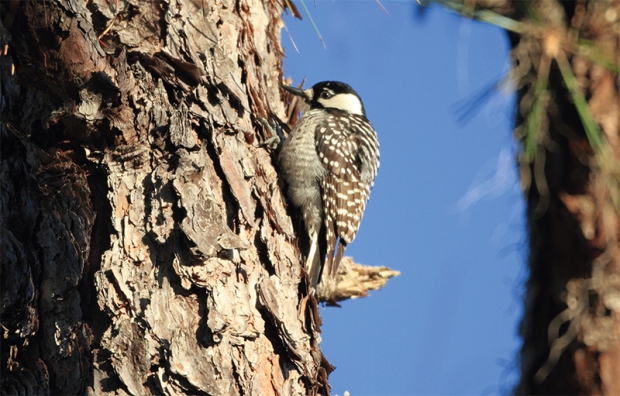With its habitat as the once-vast longleaf pine stands of the Southeast, this species has been listed as endangered since 1970

- Small woodpecker with a black-and-white striped back and distinctive white cheeks. A black cap and nape encircle the large white cheek patches.
- Digs cavities in living pines softened by heartwood rot. They are the only woodpecker that excavates its nesting and roosting cavities in living trees. Other woodpeckers live in dead trees.
- A cockade is a ribbon or ornament worn on a hat. The “cockade” of the bird is a tiny red line on the side of the head of the male.
- Picks at live trees to make the sticky pine resin flow from where the nest is located. This causes the tree to leak pitch that helps keep tree-climbing snakes away.
- Thanks to state and federal efforts, the population growth rate in South Carolina is now about 4% annually—faster than any other state or region.
- Nesting season runs April to late June and birds average one to five eggs per season.
- Breeding males roost in the best cavity—usually the most recently created with the heaviest sap flow. Eggs are laid in this cavity and the male incubates them at night.